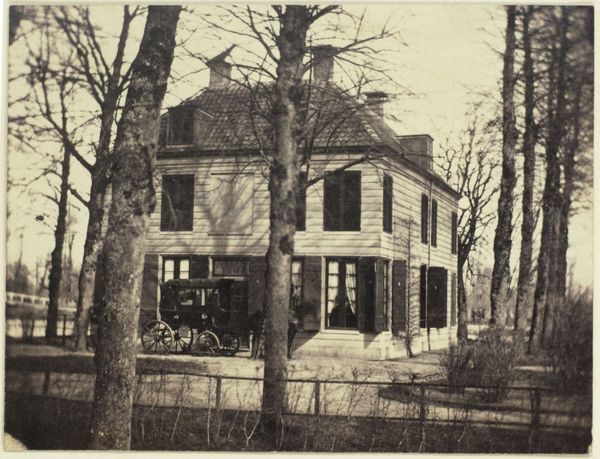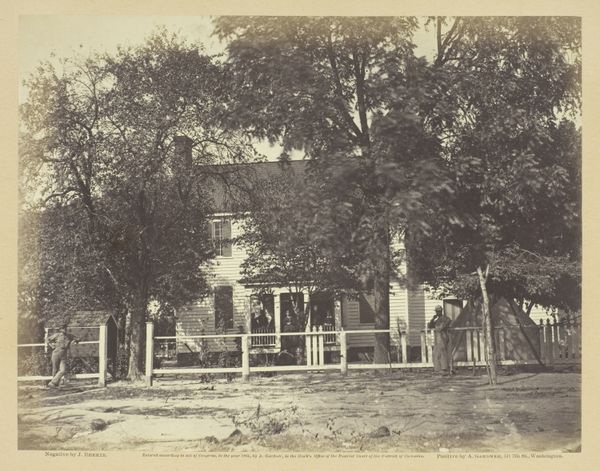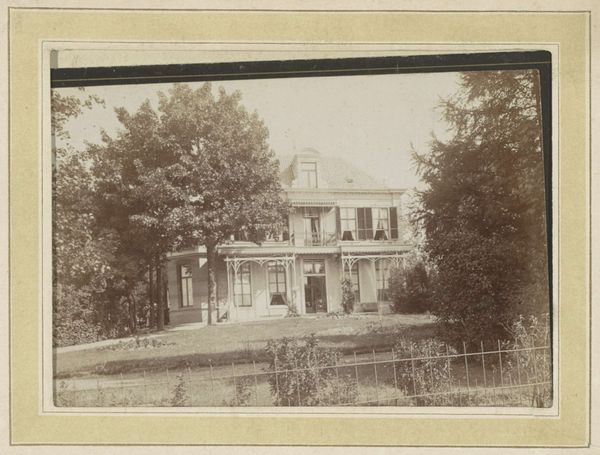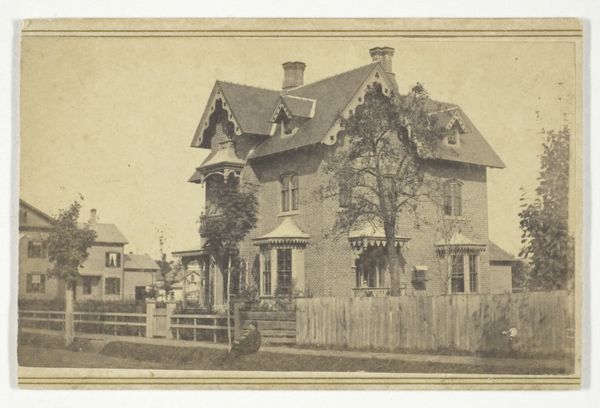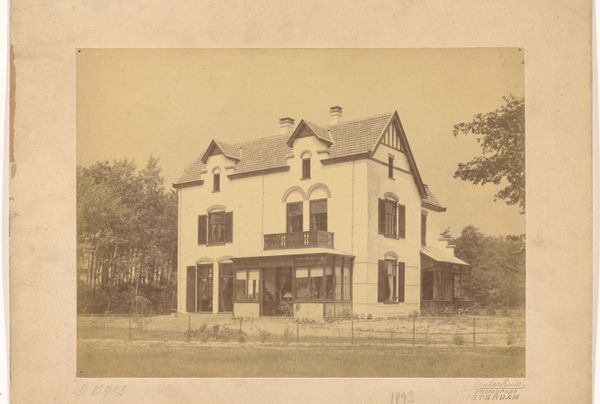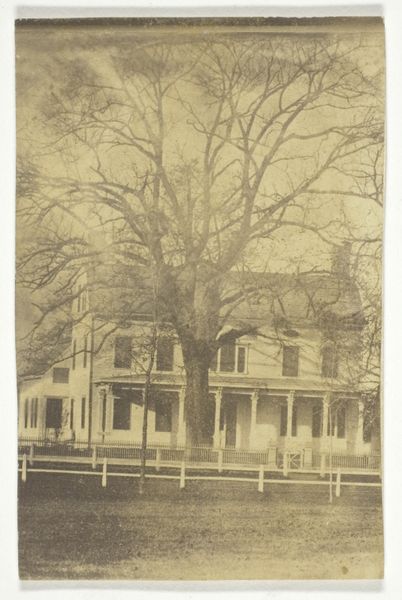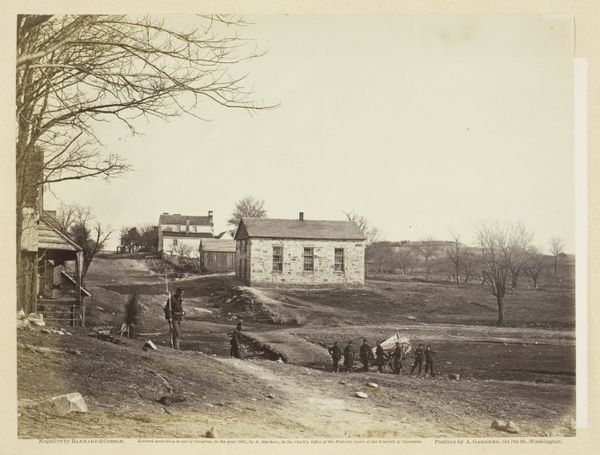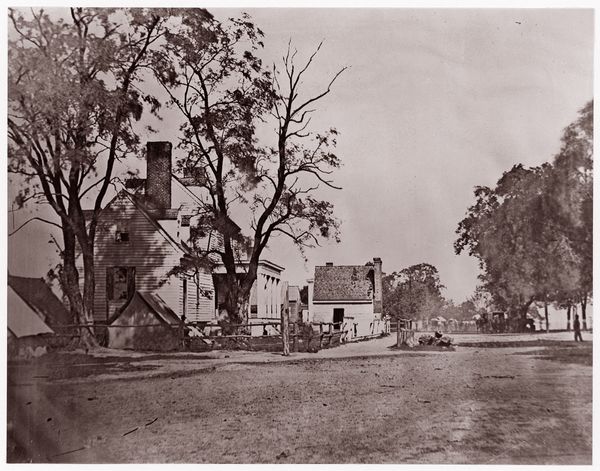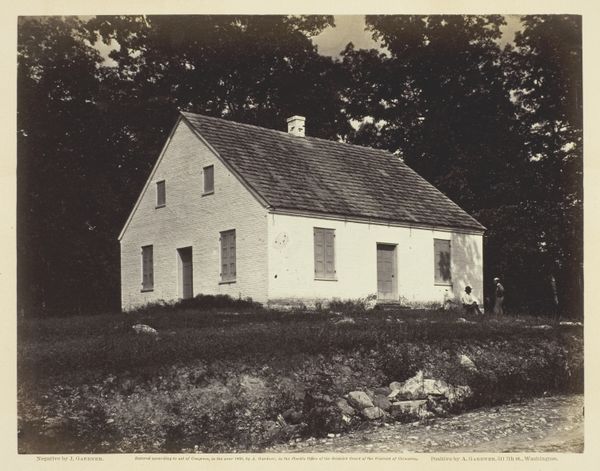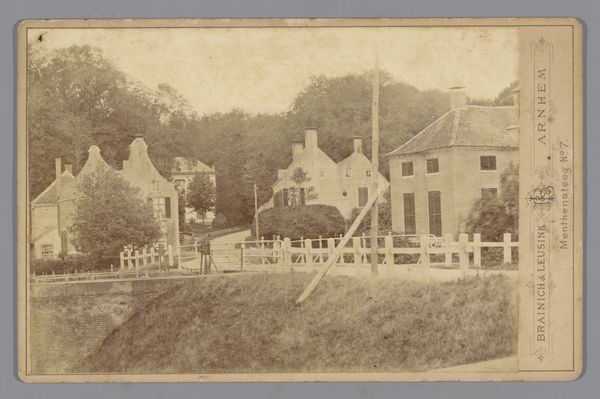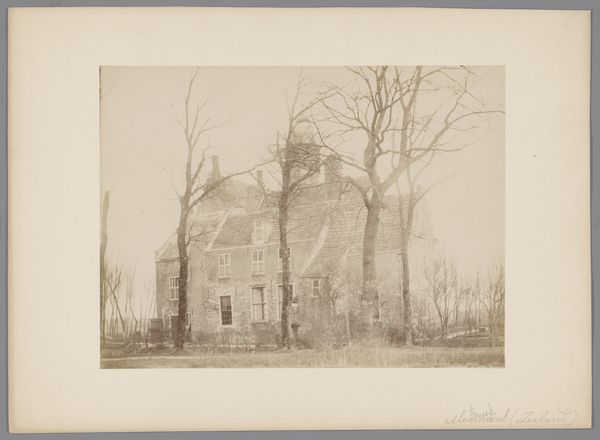
print, photography, albumen-print
#
16_19th-century
# print
#
war
#
landscape
#
photography
#
19th century
#
united-states
#
albumen-print
#
realism
Dimensions: 17.3 × 22.6 cm (image/paper); 31.2 × 44.7 cm (album page)
Copyright: Public Domain
Curator: This is "Moore House, Yorktown, Virginia," an albumen print created in 1862 by Wood and Gibson. The scene captures a seemingly ordinary house. Editor: Yes, but there’s an underlying unease. The lighting feels almost…stifling. It’s heavy. Curator: What resonates most powerfully for me is the context of the Civil War. Photography served as crucial documentation of that tumultuous period, but I feel like these historical photos of buildings deserve a closer inspection when trying to understand cultural heritage today. It speaks to race relations. Editor: Absolutely. Look at the structural details. Weathered siding, aged roof...you can practically feel the building's history seeping out. It's a material witness, if you will, to that time period, to conflict, and even now. And, those chimneys suggest a hearth, but what kind of warmth did it offer in the face of such a war? Curator: That supposed warmth and comfort were deeply entwined with the economic realities and social injustices of the era. Southern wealth relied on a labor force of enslaved people; considering who might have built, lived in, or been forced to work at the Moore House prompts us to question conventional narratives of historical sites, what the function of these building really mean when taking in the context. Editor: And consider the production of this very photograph! Albumen prints, being one of the first commercially exploitable methods of photography, required intense labor. How many hands touched this print before it made its way into a museum? The process is also inherently social, an intersection of technical knowledge, material resources, and distribution networks. Curator: I completely agree. Photography helped solidify visual records, and this piece challenges viewers like us today to examine historical settings and ask complex, multifaceted questions that uncover truth. Editor: It becomes a meditation on time, labor, and the stories materials silently carry. It's not just an image; it's an artifact imbued with meaning. Curator: Precisely. Reflecting on this photo allows us to critically consider that war's continuing presence and relevance in society, in a building. Editor: It encourages us to engage actively, to find our own bearings within its historical landscape.
Comments
No comments
Be the first to comment and join the conversation on the ultimate creative platform.
